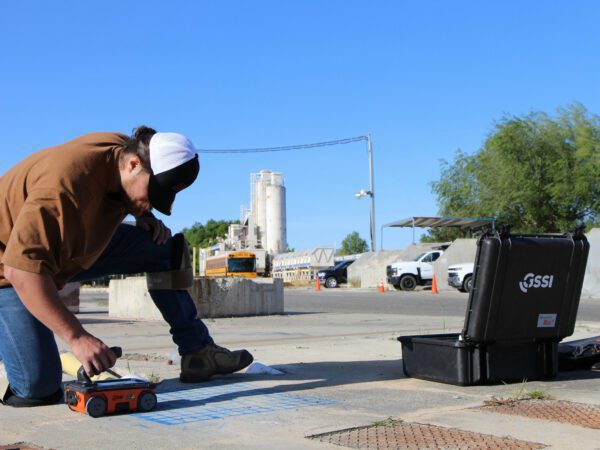The Importance of Professional Concrete Scanning Solutions
Wiki Article
Introduce the Transformative Power of Concrete Scanning in Making Best Use Of Efficiency and Security
Concrete scanning has emerged as an essential tool in the building and construction sector, using exceptional advantages in boosting task efficiency and guaranteeing security criteria. The transformative power of concrete scanning lies in its capacity to give real-time data and detailed insights, revolutionizing how projects are prepared and carried out.Importance of Concrete Scanning
Ensuring the structural integrity and security of construction jobs starts with the vital step of carrying out extensive concrete scanning. Concrete scanning is a non-destructive method made use of to spot and map subsurface components within concrete structures.The value of concrete scanning can not be overemphasized, as it plays a crucial duty in avoiding crashes, lessening project hold-ups, and ensuring the lasting toughness of the building. By identifying possible risks prior to the construction phase begins, builders can apply appropriate security procedures and make informed decisions relating to the layout and implementation of the project. Furthermore, concrete scanning aids in optimizing project timelines and budget plan by avoiding unforeseen prices and delays that may emerge due to unanticipated obstructions within the concrete. Ultimately, purchasing comprehensive concrete scanning is an aggressive approach that enhances both efficiency and security in building and construction tasks.
Exactly How Concrete Scanning Works
Concrete scanning runs as a crucial tool in construction projects by using innovative innovations to discover and map subsurface aspects without causing architectural damages. Ground Permeating Radar (GPR) and Electromagnetic Induction (EMI) are two key approaches utilized in concrete scanning. GPR works by discharging high-frequency radar pulses right into the surface, which recuperate when they run into subsurface things or spaces. The moment taken for the signal to return suggests the deepness and place of the items. EMI, on the other hand, uses magnetic fields to recognize variations in product structures, such as identifying rebar or avenues within concrete frameworks.During the scanning process, the data gathered is evaluated in real-time, enabling instant identification of potential risks or obstacles beneath the surface area. This information help in decision-making, making certain that building and construction tasks continue safely and efficiently. Additionally, 3D imaging software program can be made use of to produce thorough maps of the subsurface aspects, better enhancing job preparation and implementation. By using these innovative innovations, concrete scanning significantly lowers the danger of costly problems and injuries on building sites.
Benefits of Concrete Scanning
One of the key benefits of concrete scanning is the ability to detect and situate embedded things Check Out Your URL such as rebar, post-tension wires, and avenues properly. Concrete scanning assists in planning and developing more successfully, as it offers specific information concerning the location and deepness of architectural elements.
Study: Concrete Scanning Success

In one more situation, a construction business made use of 3D concrete scanning to examine the problem old concrete structures in a historic structure. The detailed scans provided beneficial insights into the extent of damage and assisted prioritize maintenance efforts efficiently. By proactively attending to locations of issue determined through scanning, the firm had the ability to prolong the life-span of the framework and make certain occupant security.
These situation researches emphasize the transformative power of concrete scanning in enhancing efficiency, accuracy, and safety in building jobs.
Applying Concrete Scanning in Projects
Implementing sophisticated scanning innovations throughout building and construction tasks has ended up being progressively essential for improving accuracy and security. By incorporating concrete scanning right into project planning and implementation, building and construction teams can determine potential dangers, such as rebar or post-tension wires, hidden within concrete frameworks. This proactive method decreases the danger of mishaps, hold-ups, and costly rework, inevitably leading to a lot more reliable job timelines and budgets.To carry out concrete scanning efficiently, job supervisors should work together closely with knowledgeable scanning professionals to identify the most suitable scanning methods for the specific task needs. Involving scanning specialists from the very early phases of a project enables the group to produce extensive scanning plans that resolve crucial areas of issue and over here guarantee complete data collection.
Moreover, including concrete scanning into regular job workflows can simplify decision-making processes, as real-time check data gives instant understandings into the problem of concrete frameworks - Concrete Scanning. This data-driven method helps with notified problem-solving and enables teams to make changes quickly, promoting a society of effectiveness and safety throughout the project lifecycle

Verdict
To conclude, concrete scanning plays an essential duty in boosting efficiency and safety in building tasks. By making use of see advanced innovation to spot and map out underlying frameworks within concrete, this procedure helps to prevent expensive blunders, make sure structural honesty, and lessen risks on website. With the capability to reveal covert aspects and provide exact information, concrete scanning verifies to be a beneficial device for optimizing task end results and optimizing total success.Concrete scanning is a non-destructive approach used to discover and map subsurface elements within concrete structures. Furthermore, concrete scanning aids in enhancing job timelines and budget by staying clear of unanticipated prices and delays that may arise due to unpredicted blockages within the concrete. One remarkable instance research includes a large-scale remodelling project where concrete scanning played an essential function in guaranteeing project success.In another instance, a building business made use of 3D concrete scanning to analyze the problem of aging concrete structures in a historical building. By integrating concrete scanning right into job planning and implementation, building teams can identify possible hazards, such as rebar or post-tension cables, concealed within concrete structures.
Report this wiki page